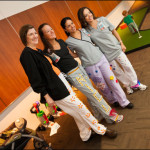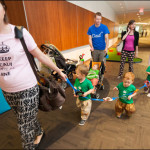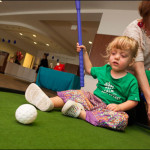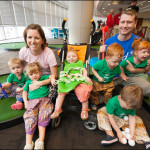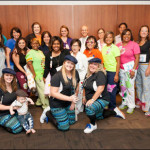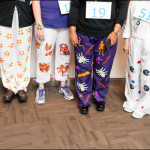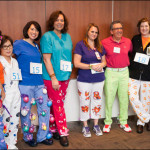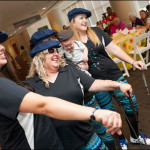
Texas Children’s employees and former patients’ families gathered at Texas Children’s Pavilion for Women to honor our neonatal nurses for their hard work and dedication. But, this wasn’t your typical celebration.
Nurses traded in their scrubs for creative, yet cringe-worthy pants that probably wouldn’t get the nod of approval from Giorgio Armani or Gianni Versace: green pants with bright yellow flowers, candy corn pants and red slacks with flamboyant feathers, to name a few.
For nurses at Texas Children’s Newborn Center, Bad Pants Day was more than just dressing up in whacky attire. It was their day to shine and realize just how much they are appreciated for the diligent work they do every day to improve the outcomes of critically-ill infants in our Neonatal Intensive Care Unit (NICU).
View the photo gallery:
Several NICU families joined in on the festivities, including David and Lauren Perkins, and their energetic 2-year-old sextuplets – Benjamin, Caroline, Andrew, Allison, Levi and Leah – who teamed up for a game of putt-putt golf with the neonatal nurses.
Ben and Amanda Kopp shared their unforgettable experience about the NICU staff who took wonderful care of their daughter, Cami, who was born at just 25 weeks at the Pavilion.
“Throughout the ups and downs of Cami’s 86-day stay in the NICU, the nurses, doctors and volunteers at Texas Children’s gave us the faith and confidence that our precious little angel would not only survive, but thrive,” said Amanda Kopp. “Today, our 17-month-old daughter is happy and healthy.”
Texas Children’s Bad Pants Day event also marked the official kick off for next month’s 17th annual Bad Pants Open. All proceeds from the golf tournament will support Texas Children’s Newborn Center. Several of the sponsors and organizers of this fundraiser attended Bad Pants Day to show their appreciation for our NICU nurses.
To register for the Bad Pants Open and support a worthy cause, click here.
To learn more about Texas Children’s Newborn Center, click here for a video tour.


